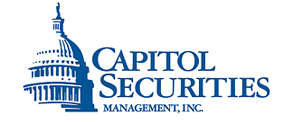By: Kent Engelke | Capitol Securities
Perhaps the biggest surprise trade of the year — a trade that few have discussed — is the collapsing value of the dollar. The dollar has slipped to a two and half year low versus the euro while the euro is in its longest rally since 2013.
Bloomberg writes the dollar is down against all 16 major currencies this year. It is only the second time since at least 1992 that it fell across the board. 2004 was the only other year. At the beginning of the year consensus expected the inverse.
Will the inverse now occur in equities, defined as value out performing momentum growth, an environment few are expecting? Yesterday, the WSJ reported that there is $1 trillion more in ETFs than hedge funds. Wow! Five years ago, the ETF industry was in its infancy.
I will argue a major reason why there is a massive over performance in momentum growth is the result of the massive proliferation of ETFs and technology-based trading where the two primary variables are size and momentum. Fundamental security research is all but dead. But I will ask, is it?
It is widely accepted the momentum trade is extremely crowded and typically when everyone is in the same trade, the inverse occurs. What will be the catalyst for such a transition? It is probably an event that no one would expect.
My concern is transparency is lacking within the ETF industry, transparency regarding leverage, composition and overall structure. In many regards, it reminds me of the securitized loan portfolios of 12 years ago where many thought risk was isolated and liquidity was great.
I believe that during this transition, security analysis will again be of importance.
The averages suggested that yesterday was a relatively quiet day. In reality, the volatility beneath the surface was intense.
What will happen today?
Last night the foreign markets were mixed. London was up 0.52%, Paris was up 0.39% and Frankfurt was down 0.25%. China was down 0.37%, Japan was down 0.25% and Hang Sang was down 0.28%.
The Dow should open quietly lower. The 10-year is up 5/32 to yield 2.25%.

















